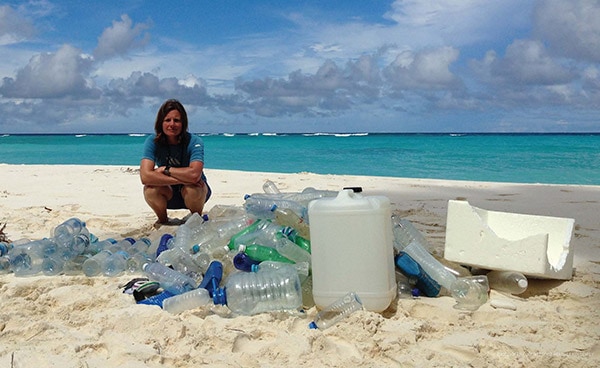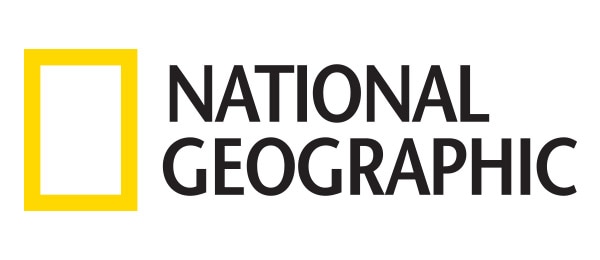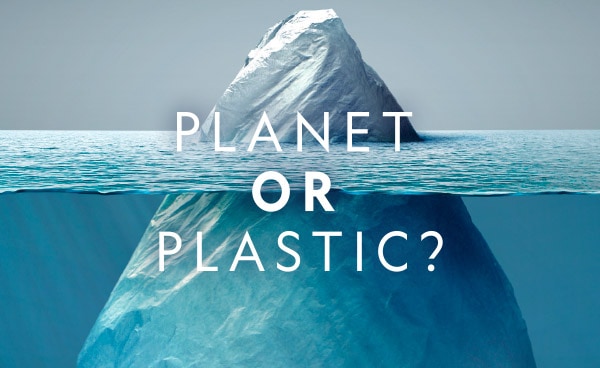

EXHIBITION
Planet or Plastic? Exhibition Guide
We made plastic. We depend on it. Now we’re drowning in it.
EXHIBITION SUMMARY
Planet or Plastic? is an exhibition by National Geographic about the global plastic pollution crisis told through more than 70 powerful photographs, examining the detrimental effects of plastic on the natural environment particularly in relation to our world’s oceans and marine life. Our human dependence on plastic is reflected in contrast with the innovative individuals and communities who are working on solutions to this urgent problem.

Explore the Exhibition
-

Introduction – Living in the Age of Plastics
-

Section 1: Plastics – A Modern Marvel
-

Section 2: The Darker Side of Plastics
-

Section 3: The Haunting Art of Plastic Pollution
-

Section 4: Steps Toward A Cleaner Future
-

Section 5: Science in Action
-

Section 6: Choosing Planet Over Plastic
-

Educational Interactive Space
-

Planet or Plastic? Events, Workshops & Tours
-
Introduction – Living in the Age of Plastics
Most of us interact with hundreds of pieces of plastic everyday – at work, in restaurants and in our own homes. Plastic is so commonplace that we don’t realise how much we rely on it. Plastic has largely changed human life for the better.
Is there a way for us to keep using this miracle material and enjoy a pollution-free environment too? Experts say yes. Through a combination of citizen engagement, corporate diligence, scientific innovation and policy change, we can solve our plastic problem. All it will take is a change of perspective.So which will you choose: planet or plastic?
Featured Artwork
4images-
 Yiwu International Trade City, Zhejiang China. Photograph by John Seymour, courtesy of National Geographic, 2018.
Yiwu International Trade City, Zhejiang China. Photograph by John Seymour, courtesy of National Geographic, 2018.
-
-
Section 1: Plastics – A Modern Marvel
In just 150 years, plastic went from scientific discovery to ubiquitous product – a meteoric rise fueled by the material’s unique combination of characteristics. Plastics are polymers, long-chain molecules made from repeating links called monomers. Polymers are strong, lightweight and durable, which makes them incredibly useful for a number of applications ranging from sports equipment to air travel.
In this section of the exhibition, we see how plastic was created 150 years ago and rapidly transformed into a widely manufactured synthetic material.
Featured Artwork/Content
4images-
 A photograph taken for a 1955 LIFE magazine photograph for the article titled ‘Throwaway Living’ about the advent of disposable plastic products post-war. Photograph by Peter Stackpole. Courtesy of LIFE Picture Collection. Getty Images.
A photograph taken for a 1955 LIFE magazine photograph for the article titled ‘Throwaway Living’ about the advent of disposable plastic products post-war. Photograph by Peter Stackpole. Courtesy of LIFE Picture Collection. Getty Images. -

 WATCH National Geographic’s mini documentary ‘A Brief History of How Plastic Has Changed Our World’ here
WATCH National Geographic’s mini documentary ‘A Brief History of How Plastic Has Changed Our World’ here
-
-
Section 2: The Darker Side of Plastics
Roughly 40 percent of plastic manufactured today is disposable, likely to be discarded within minutes of purchase. Most plastic never reaches a recycling bin. When plastic reaches the sea, its benefits to humans – its light weight and durability – become harmful to animals. Animals of all sizes from zooplankton to whales, ingest microplastics with untold effects.
In this section, the vast amounts and different types of plastic waste generated by all countries across the world is explored in photographs. Examples of community-led recycling efforts are also surveyed.
Featured Artwork/Content
4images-

A loggerhead turtle caught in an old plastic fishing net in the Mediterranean Sea off the coast of Spain.
Photograph by Jordi Chias, courtesy of National Geographic, 2018.
-


Part 1: Your Sneakers Are Part of the Plastic Problem (Duration: 5:44)
WATCH National Geographic’s mini documentaries on ‘The Story of Plastic’.
-


Part 2: What’s the World’s Most Littered Plastic Item? Cigarette Butts (Duration: 5:21)
National Geographic’s mini documentaries on ‘The Story of Plastic’.
-


Part 3: How Your Toothbrush Became a Part of the Problem (Duration: 4:50)
National Geographic’s mini documentaries on ‘The Story of Plastic’.
-
-
Section 3: The Haunting Art of Plastic Pollution
Photographers, artists and activists help us to see the problem of ocean plastics in new ways. Their images can be both alluring and repulsive, opening our eyes to the extent of the problem and inspiring us to take action.
This section of the exhibition features the work of photographers, National Geographic explorers and researchers. One of the photographers featured in this section, Mandy Barker, has produced a series of images constructed from collected and crowd-sourced plastic remnants. The images, she said, ‘give science a visual voice’ in a way that scientific research papers can’t.
Take the Marine Debris Quiz made by Taiwan RE-THINK Environmental Education Association founded in 2013. RE-THINK worked together with Yi Chen Hong, a designer of Polluted Water Popsicles to create Taiwan’s first illustrated encyclopedia of marine debris, drawing attention to this crisis in our region. Start the quiz here.
Featured Artwork
4image-
 Discarded fishing lines form nest-like balls due to tidal movements. Photograph by Mandy Barker, courtesy of National Geographic, 2018.
Discarded fishing lines form nest-like balls due to tidal movements. Photograph by Mandy Barker, courtesy of National Geographic, 2018.
-
-
Educational Interactive Space
The educational Interactive Space in the exhibition focuses on how COVID-19 has increased our usage of single-use plastic, especially through the usage of disposable face masks. It asks the question, "Have you ever wondered what happens to your disposable mask when you’re done with it?" Masks help us stay safe and protect our community but that doesn’t mean we should let them harm the environment.
Find your own path on a trail in the Interactive Space that includes interactive challenges which reveal the damaging consequences of our increased use of disposable plastic. The path winds toward a powerful reflective conclusion, a mirror in which you are faced with yourself and your choices. What happens to your single use plastic after you’ve used it? What choices can you make to be a better friend of the environment?
The Interactive Space uses ArtScience Museum's 'feet-first' approach to tactile interaction within the gallery, inviting visitors to activate interaction stations with their feet, instead of their hands.
4 -
Section 4: Steps Toward A Cleaner Future
The most successful efforts to combat the looming catastrophe created by ocean plastics have been made by multiple parties, including local governments, the plastics industry and public groups. These campaigns aim to achieve a simple goal: to stop more plastic from flowing into the seas. Scientists and researchers are helping the cause, working to define the scope of the problem, its effects on both people and wildlife, and what can be done to mitigate the effects of ocean plastics.
In this section of the exhibition are photographs that show how this type of co-operative work – between scientists and the efforts of individuals, governments and corporations – can make a lasting impact.LISTEN to an interview with Kathryn Kellogg on the Zero Waste podcast @Zero_Waste_Countdown
Featured Artwork
4image-
 The Toplun Plastic Corporation, Valenzuela City, Manila, Philippines. Photograph by Randy Olson, courtesy of National Geographic, 2018.
The Toplun Plastic Corporation, Valenzuela City, Manila, Philippines. Photograph by Randy Olson, courtesy of National Geographic, 2018.
-
-
Planet or Plastic? Events, Workshops & Tours
ArtScience Museum presents a collection of specially curated programmes in conjunction with Planet or Plastic? to ignite discussion and inspire action. From thought-provoking films about the state and future of the Earth to hands-on workshops where you create your very own sea turtle using recycled materials and simple tools, discover the events we have on offer from this downloadable guide. You can also visit these pages for more information:
Films on ArtScience on Screen
Workshops at ArtScience Museum
Tours at ArtScience Museum
Talks at ArtScience Museum
Online programmes at ArtScience at Home4 -
Section 5: Science in Action
This section profiles some of the National Geographic explorers, fellows and grantees who address the problem of plastic waste in their work. They are engineering new materials that break down faster after being discarded, finding new uses for the plastic we already have, and developing more effective strategies for capturing waste that escapes the disposal stream.
In this section of the exhibition are profiles of scientists and researchers accompanied by photographs that tell the stories of their ongoing work all around the world.
Artwork Images
4image-

Biologist Heather Koldeway is a 2018 National Geographic Fellow. She co-founded Project Seahorse in 1996 and is recognised as the world’s leading authority on seahorses.
Photograph courtesy of Heather Koldewey
-
-
Section 6: Choosing Planet Over Plastic
Our everyday choices affect the planet. So, what will you choose? We are faced with dozens of decisions each day that make an impact on the Earth, our shared home. While actions such as using a plastic straw or saying ‘yes’ to that disposable plastic bag may seem insignificant, they add up. Importantly, marine animals don’t have a choice, they are forced to live in an environment that is filling up with our plastic waste.
In this section, commit to doing your part in the fight against plastic pollution by taking the National Geographic Plastic Pledge.Take the pledge to do your part.
4

CONSERVATION OF ARTWORK
You may have noticed art handlers wearing protective gloves. This is because the oil on our hands causes a chemical reaction with almost everything we touch. For artworks and photographs, this can have a detrimental effect.
Most museums enforce a ‘NO FLASH’ photography rule. The ultraviolet light of the flash generates heat and light, both of which can damage artworks.
Taking photographs in the museum is encouraged unless otherwise signposted.
You may notice our museum artworks must be kept at specific low temperatures and relative humidity to protect them from deterioration.
Want to know more about collection conservation guidelines? Visit the International Council of Museums for more information.

Our Partners
National Geographic
Planet or Plastic? is organised and traveled by the National Geographic Society.
The National Geographic Society is a global nonprofit organization that uses the power of science, exploration, education and storytelling to illuminate and protect the wonder of our world. Since 1888, National Geographic has pushed the boundaries of exploration, investing in bold people and transformative ideas, providing more than 14,000 grants for work across all seven continents, reaching 3 million students each year through education offerings, and engaging audiences around the globe through signature experiences, stories and content. To learn more, visit www.nationalgeographic.org


